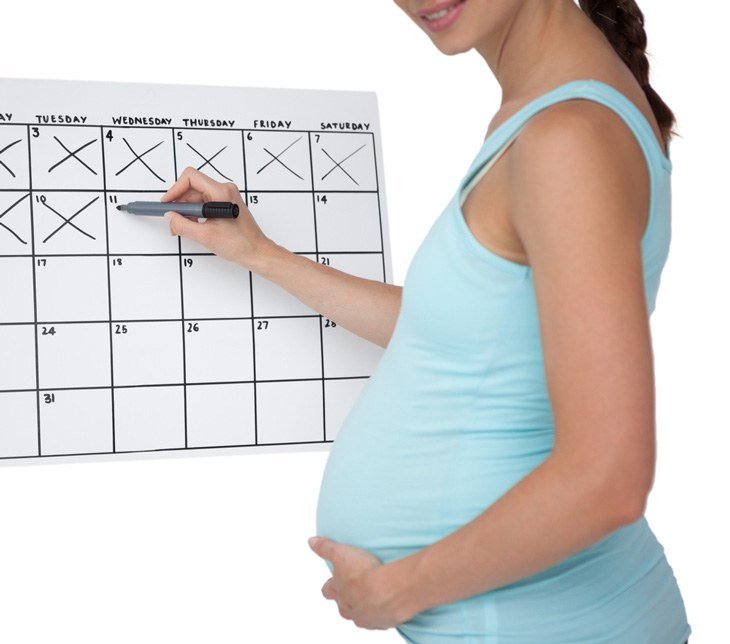The exciting development of Frozen Embryo Transfer – FET is now helping more and more families to achieve success. And calculating the due date has always been one of the most common parental concerns. However, this can be a daunting task in FET as some may find it hard to determine the conception date. And in the high demand of envisaging the FET results, FET due date calculator came in as a comprehensive solution. Thus, this article provides a walkthrough in using and understanding the FET due date calculator.
A. What to prepare?
All you have to prepare for the result is the date. The calculator will do all the counting work. But you have to make sure how you want it to calculate the due date and gestational age. This chart will now show you which time to fill in the form in different cases.
[su_table alternate=”no”]
| Conception method | Date to use |
| Natural | First date of the last menstrual period |
| Insemination, IVF, or after replacing frozen embryos in natural cycles | First date of the last menstrual period or ovulation date |
| IVF or ICSI in a stimulate cycle | Date of egg collection |
| Intrauterine insemination in a stimulated cycle | Date of insemination |
| After replacing frozen cleaved embryos in a HRT or stimulated cycle | Date of replacing cleaved embryos |
| After replacing frozen blastocysts | Date of replacing blastocysts |
| After replacing fresh blastocysts | Ovulation date |
[/su_table]

Now let’s take an example to clarify the difference in due date of natural pregnancy, FET 3-day pregnancy, and FET 5-day pregnancy.
There are three women filled in their conception date to calculate the due date. And each of them has each different conception methods among the three mentioned. All of them selected January 1st for the date, so what will be the difference in these dates.
Answer:
The woman A with natural conception method – January 1st is the first day of her last menstrual period. And the conception date is two weeks later – January 14th.
The woman B with FET 3-day pregnancy – January 1st her transfer date. And three days before January 1st is considered her conception date – 29th December of the last year.
The woman C with FET 5-days pregnancy – January 1st is her transfer date. And five days before January 1st is considered her conception date – 27th December of the last year.
And what is the difference in their result for the due date?
Answer: The due date of the A is two weeks three days later than that of B, and two weeks five days later than that of C.
Specifically, A’s due date is on October 8th, B’s due date is September 19th, and C’s due date is September 21st.
[su_table alternate=”no”]
| Woman | A (natural pregnancy) | B (FET 3-day) | C (FET 5-day) |
| Due date formula | X | X – (2 weeks + 3 days) | X – (2 weeks + 3 days) |
[/su_table]
Finally, what you should note is that the due date is 38 weeks after the conception date. See more at:
B. How to get a grasp of your pregnancy using FET due date calculator?
You can easily search for online free FET due date calculator; there are thousands of them. I had many tests on them, and there should not be any worry about their performance. There is a consensus among their results.
However, I seem to be more inclined in using IVF.ca because it also provides thorough information on the fetal developments. Again, you can just opt for any FET calculator of your choice. Now comes the step-by-step instruction for using and understanding the FET due date calculator.
Step 1: Fill in the transfer day
There should not be any obstacle in this step. What you have to do is to simply select the month, day, and year of your transfer date. Double check the date to make sure you select the correct one.
On most FET calculator websites, there is also a brief instruction for you to choose the date. But simply just enter the embryo transfer date. However, make sure that you select the correct type of pregnancy. Is its 3-day FET, 5-day FET, or IVF, etc.?
Step 2: Hit the “Calculate” button
It just takes you one second to see the results. Different sites may have different ways of showing the results. However, the singleton due date result remains the same across different FET calculating site. Most of the sites will show the gestational age, singleton due date, or other details of the fetal development.
Step 3: Investigate the results
Besides offering the estimated due date, some FET calculator also provides other valuable information. Now let’s take an insight od what they are.
1. First beta
Before the egg is retrieved, an hCG shot is given with the view to triggering ovulation. This shot can stay in the system for about two weeks. And as hCG is the same hormone measured for in a pregnancy test, a home pregnancy test during this period may give out a false positive reading.
Also, a false negative result may happen because it’s still early to examine the important natural hCG. Thus, the first reliable blood test should occur around day 14 from the retrieval day.
2. Twins by average gestation
If the pregnant is expecting a twin, the official due date is similar to the singleton pregnancy. However, the twin’s pregnancy average delivery rate is about three weeks earlier. Also, there are details on triplets by average gestation, and quads by average gestation.
3. Trimester stages
The FET calculator may also display which trimester are you in and the details on fetal development in the trimester stages.
3.1 Trimesters by development
In this category, you will see the date of each trimester’s beginning. And we all know that there are three development milestones in 40-week pregnancy period.
The first trimester encompasses with major structural development. The second one is the fetal growth phase. And the third stage is when the fetal is more than 24 weeks and become matured to the extent that viability outside the womb is possible.
3.2 Trimesters by gestation
They include two weeks of preconception counted from the first day of the last menstrual period. In this category, you will also see the start time of the second and third trimester by gestation.
3.3 Trimesters by conception
The three trimesters by conception are counted based on the conception date. They refer to the 38-week of pregnancy counting from the egg retrieval. And then the 38 weeks break down into three equal trimesters.
4. Prenatal testing periods
This category acts as a plan for the pregnant medical checks. Specifically, it includes major tests and their period within which the pregnant should take. Some common tests are CVS, Amniocentesis, Nuchal Translucency, and Gestational Diabetes.
5. Stages of Embryo/Fetal development
Some FET calculators also provide the stages of embryo development. The embryo development phase includes the expected dates when the cardiac contraction begins and limb buds forms.
The fetal development stages include the estimated dates when the heartbeat can be detected, brainwave begins, vital structures complete, movement forms, fetus sucks thumb, and maternal sounds can be recognized.
C. Conclusion
Calculating FET due date is no longer a daunting task if you understand the conception and ovulation concept of it. Also, with the help of FET due date calculator, you are free from manual counting, which is time-consuming and easy to mess up. This piece of writing hopefully provides you with useful knowledge for FET result calculation.



